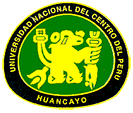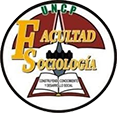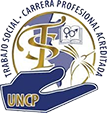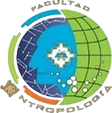The informative treatment of the 2007 Pisco earthquake in the newspapers El Comercio, La República and El Peruano
DOI:
https://doi.org/10.26490/uncp.sl.2024.8.1.1928Keywords:
press, disaster, earthquakesAbstract
Major earthquakes are events that put a country's public and private institutions to the test. Each event leads to analysis, debate, and reflection on the response capacity of the various fields of action, including the media. The objective of this article is to analyze the informative treatment of the newspapers El Comercio, La República and El Peruano of the Pisco earthquake of August 15, 2007 - with the theoretical foundations of Agenda-Setting and Framing - to determine the predominance of topics, approaches, social groups, and their roles as protagonists-secondary and patient-agents. The quantitative method was applied to relate variables and an analysis sheet was used for data collection. The sample, non-probabilistic, comprised only the copies of the print run distributed in the city of Lima during the 15 days following the earthquake. The results show that the following approaches stand out: Description of pain and solidarity, Rehabilitation and reconstruction, Balance of damages, Civil and administrative liability, which shows that the coverage was focused on the consequences of the earthquake, the response actions, and the efficiency or not of the executing entities. This study derives from the author's research for his master's thesis in Communications at the Universidad Nacional Mayor de San Marcos.
References
Agudelo, G., Aigneren, J. M., & Ruiz, J. (2008). Diseños de investigación experimental y no-experimental. https://bibliotecadigital.udea.edu.co/bitstream/10495/2622/1/AgudeloGabriel_2008_DisenosInvestigacionExperimental.pdf
Arias, F. (2006). El proyecto de Investigación: Introducción a la metodología científica. Episteme.
Batthyány, K., & Cabrera, M. (2011). Metodología de la investigación para las ciencias sociales: apuntes para un curso inicial. https://www.colibri.udelar.edu.uy/jspui/bitstream/20.500.12008/26551/1/Metodologia%20de%20la%20investigaci%c3%b3n%20en%20CCSS_Batthyany_Cabrera.pdf
Bernal, C. (2006). Metodología de la Investigación: administración, economía, humanidades y ciencias sociales. Pearson Educación.
Blanco, C. (2011). Encuesta y estadística: Métodos de Investigación Cuantitativa en Ciencias Sociales y Comunicación. Brujas.
Brugman, B. C., Burgers, C., & Steen, G. J. (2017). Recategorizing political frames: a systematic review of metaphorical framing in experiments on political communication. Annals of the International Communication Association, 41(2), 181-197. https://doi.org/10.1080/23808985.2017.1312481
Carreño, M. (2017). El tratamiento de la información y la cultura de prevención de desastres en los medios escritos. Los casos de los diarios Perú 21, La República y Ojo. [Tesis de posgrado, Universidad San Martín de Porres]. Repositorio institucional USMP. https://repositorio.usmp.edu.pe/handle/20.500.12727/2804
Casaverde, M. (1995). Fenómenos naturales y catástrofes que se registran en el Perú - Impacto social. En Conferencia nacional para presidentes de comités de Defensa Civil, 1: Prevención y mitigación de desastres.
Castro, F. (2003). El proyecto de investigación y su esquema de elaboración. Uyapar.
Cazau, P. (2006). Introducción a la investigación en ciencias sociales, Tercera Edición. Buenos Aires.
Cheng, Y. (2016). The third-level agenda-setting study: an examination of media, implicit and explicit public agendas in China. Asian Journal of Communication, 26(4), 319-332. https://doi.org/10.1080/01292986.2015.1130159
Christians, C., Glasser, T., McQuail, D., Nordenstreng, K., & White, R. (2009). Normative theory of the press. University of Illinois Press.
D’Angelo, P. (2002). News framing as a multiparadigmatic research program: A response to Entman. Journal of communication, 52(4), 870-888. https://doi.org/10.1111/j.1460-2466.2002.tb02578.x
De-Vreese, C. H. (2003). Framing Europe: Television news and European integration. Aksant Academic Publishers.
De-Vreese, C. H. (2005). News framing: Theory and typology. Information Design Journal, 13(1), 51-62.
https://doi.org/10.1075/idjdd.13.1.06vre
Entman, R. (1993). Framing: Toward clarification of a fractured paradigm. Journal of Communication, 43(4), 51-58. https://doi.org/10.1111/j.1460-2466.1993.tb01304.x
Inguillay, L. K., Tercero, S. L., & López, J. (2020). Ética en la investigación científica. Revista Imaginario Social, 3(1), 42-51. https://doi.org/10.31876/is.v3i1.10
González, N. (2008). La comunicación del riesgo en la prensa escrita un estudio del tratamiento informativo del naufragio del petrolero Prestige en los diarios El País y El Mundo [Tesis de posgrado, Universidad Complutense de Madrid]. Repositorio institucional UCM.
https://docta.ucm.es/rest/api/core/bitstreams/8b9b1f61-c2fd-4c5c-b5e2-dd85181e836b/content
Holbert, R., Garrett, R., & Gleason, L. (2010). A new era of minimal effects? A response to Bennett and Iyengar. Journal of Communication, 60(1), 15-34. https://doi.org/10.1111/j.1460-2466.2009.01470.x
Houston, J., Pfefferbaum, B., & Rosenholtz, C. (2012). Disaster news: Framing and frame changing in coverage of major US natural disasters, 2000– 2010. Journalism & Mass Communication Quarterly, 89(4), 606-623. https://doi.org/10.1177/1077699012456022
Huamán F., & Becerra, C. (2014). Debate sobre la concentración de medios en el Perú: El caso de la fusión del Grupo El Comercio con el Grupo Epensa. Ética. Libertad de expresión y Derecho a la Comunicación. En Simposio llevado a cabo en el XII Congreso Latinoamericano de Investigadores de la Comunicación, Lima.
Liu, D. (2010). A comparative look at the coverage of the Sichuan earthquake in Chinese and American newspapers [Tesis de posgrado, Iowa State University]. Repositorio institucional ISU. https://core.ac.uk/download/pdf/38922415.pdf
Lozada, J. (2014). Investigación aplicada: Definición, propiedad intelectual e industria. CienciAmérica: Revista de divulgación científica de la Universidad Tecnológica Indoamérica, 3(1), 47-50. http://201.159.222.118/openjournal/index.php/uti/article/view/30/23
McCombs, M. (2006). Estableciendo la agenda. El impacto de los medios en la opinión pública y en el conocimiento. Paidós.
Matthes, J. (2012). Framing politics: An integrative approach. American Behavioral Scientist, 56(3), 247-259. https://doi.org/10.1177/0002764211426324
Molloy, D. (2015). Framing the IRA: beyond Agenda Setting and framing towards a model accounting for audience influence. Critical
Studies on Terrorism, 8(3), 478-490. https://doi.org/10.1080/17539153.2015.1096654
Morales, C. (2010). Manual Periodistas por la Gestion de Riesgo de Desastres. https://desastres.medicina.usac.edu.gt/documentos/docgt/pdf/spa/doc0107/doc0107-parte01.pdf
Muñiz, V., Fonseca, R., & Caballero, D. (2016). Formación de la agenda pública sobre temas experienciales en Santiago de Cuba durante el año 2015. Chasqui. Revista Latinoamericana de Comunicación, (133), 373-392. https://www.redalyc.org/articulo.oa?id=16057383024
Noguera, J.M. (2006). El Framing en la cobertura periodística de la catástrofe: las víctimas, los culpables y el dolor. Sphera Pública, (6), 193-206. https://www.redalyc.org/articulo.oa?id=29700612
Obregón, R., Arroyave, J., & Barrios, M. (2010). Periodismo y comunicación para la gestión de riesgo en la subregión andina: discursos periodísticos y perspectivas para un enfoque prospectivo y preventivo. Folios, Revista de la Facultad de Comunicaciones, (23), 105-135. https://revistas.udea.edu.co/index.php/folios/article/view/11787
Pacheco, J., Barrera, M., & De La Hoz, A. (2020). Análisis general del SPSS y su utilidad en la estadística. E-IDEA Journal of business sciences, 2(4), 17-25. https://revista.estudioidea.org/ojs/index.php/eidea/article/view/19
Pita, S., & Pértegas, S. (2002). Investigación cuantitativa y cualitativa. Cad Aten Primaria, (9), 76-78. https://dialnet.unirioja.es/servlet/articulo?codigo=2331095
Rodero, E., Pérez, A., & Tamarit, A. (2009). El atentado del 11 de marzo de 2004 en la Cadena SER desde la teoría del framing. ZER: Revista de Estudios de Comunicación = Komunikazio Ikasketen Aldizkaria, 14(26), 81-103. https://dialnet.unirioja.es/servlet/articulo?codigo=3226629
Sádaba, T. (2008). Framing: el encuadre de las noticias: el binomio terrorismo-medios. La Crujía, 22(1), 149-150. https://doi.org/10.15581/003.22.37029
Shehata, A., & Strömbäck, J. (2013). Not (yet) a new era of minimal effects: A study of agenda setting at the aggregate and individual levels. The International Journal of Press/Politics, 18(2), 234-255. https://doi.org/10.1177/1940161212473831
Tagle, F. (2017). Framing y desastres naturales: encuadre a la prensa escrita chilena. Perspectivas de la Comunicación, 10 (1), 137-156. https://cubo.ufro.cl/ojs/index.php/perspectivas/article/view/690
Vale, L., & Campanella, T. (2005). The resilient city. How modern cities recover from disaster. Oxford University Press.
Vargas Llosa M. (1987, 4 de agosto). Hacia el Perú totalitario. El País. https://elpais.com/diario/1987/08/05/opinion/555112805_850215.html
Vicente-Mariño, M., & López-Rabadán, P. (2009). Resultados actuales de la investigación sobre framing: sólido avance internacional y arranque de la especialidad en España. Zer, 14(26), 13-34. https://repositori.uji.es/xmlui/handle/10234/24502
Zucker, H. (1978). The variable nature of news media influence. Annals of the International Communication Association, 2(1), 225-240.
https://doi.org/10.1080/23808985.1978.11923728
Zunino, E. (2018). Agenda Setting: Cincuenta años de investigación en Comunicación. Intersecciones en Comunicación, 1(12), 187-210. http://portal.amelica.org/ameli/jatsRepo/216/2161261009/index.html
Downloads
Published
Issue
Section
License
Copyright (c) 2024 Luis Martín Santos Chaparro

This work is licensed under a Creative Commons Attribution 4.0 International License.

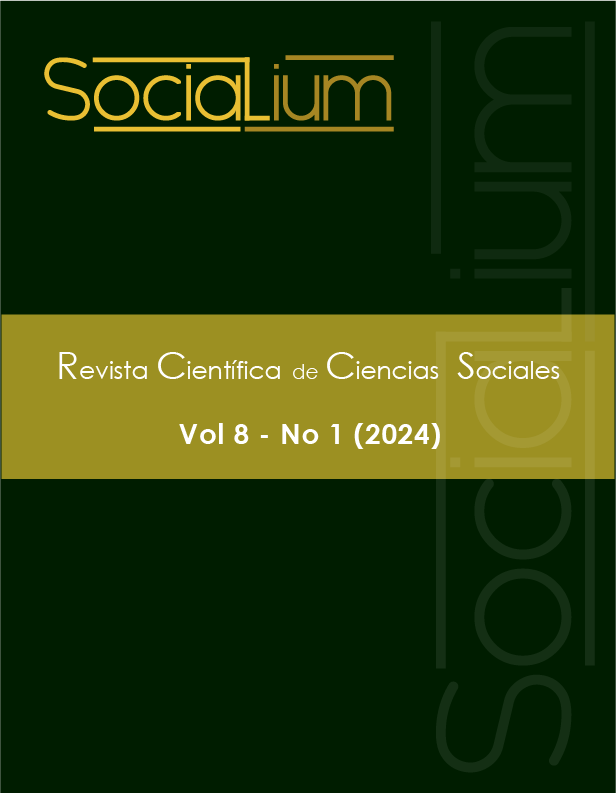

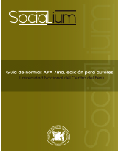




.jpg)










